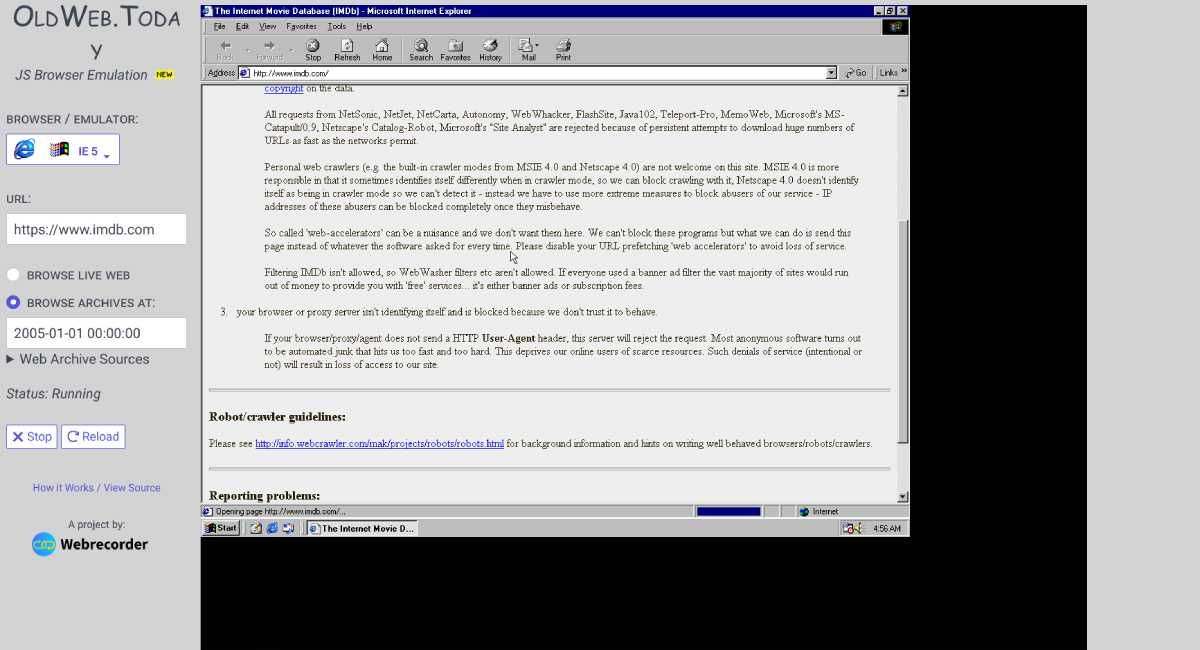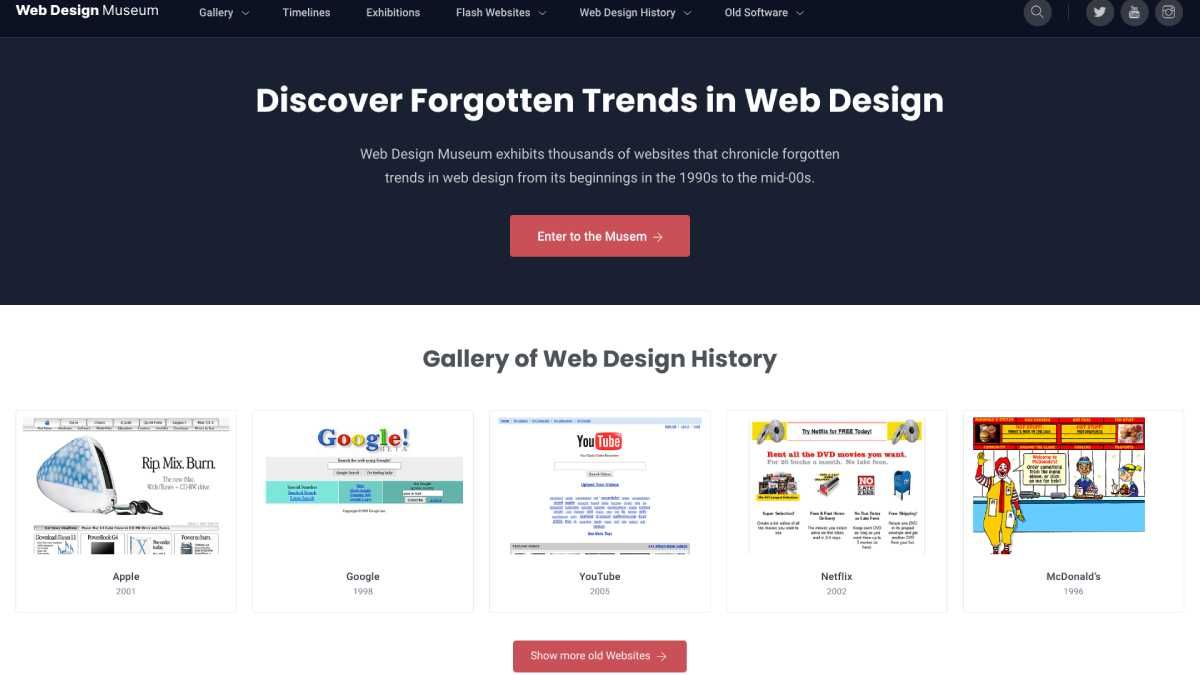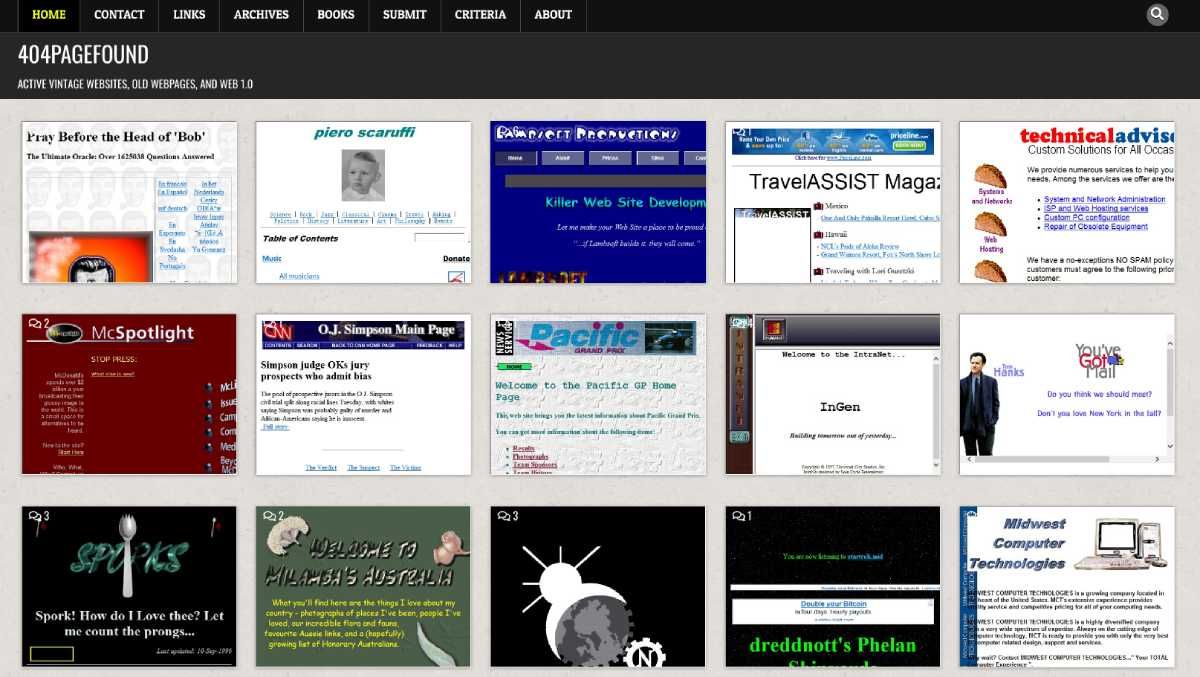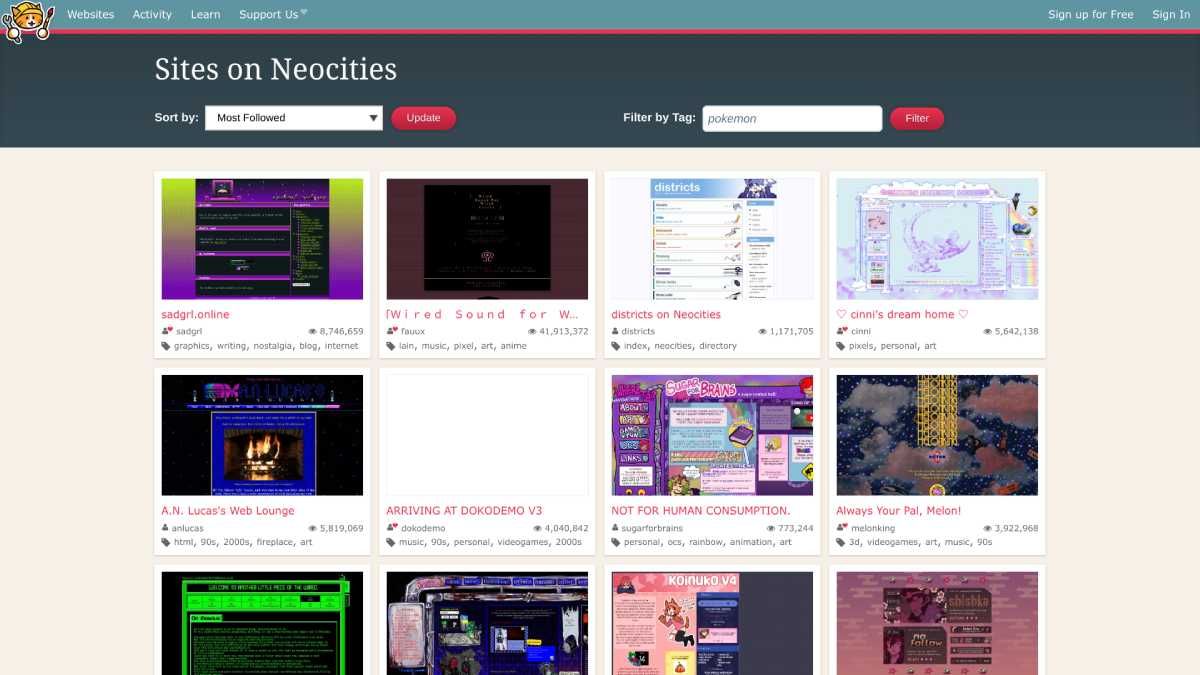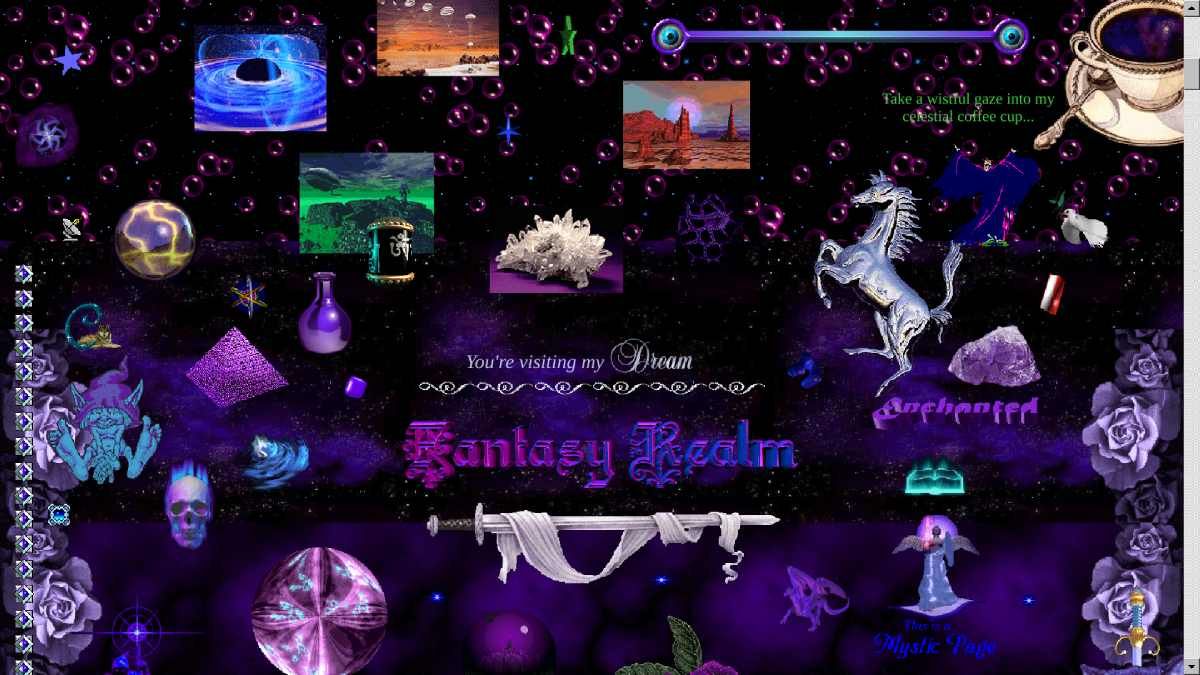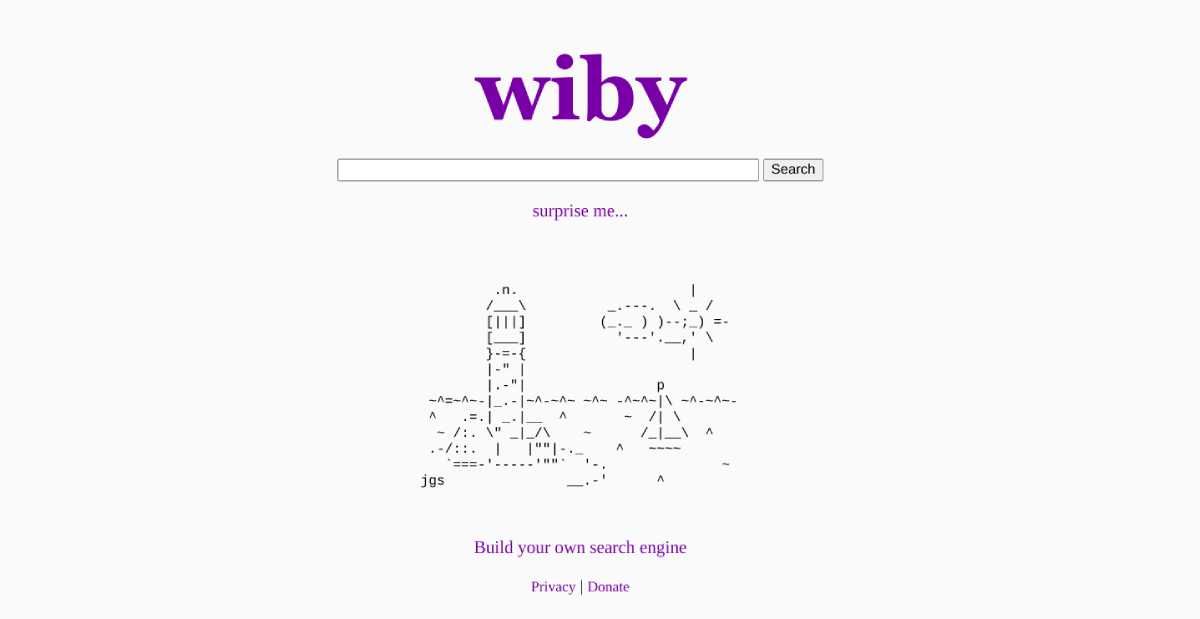Since its creation in 1989, the world wide web has evolved into an entirely different beast. The most obvious aspect to the uninitiated is the change in website design. And today, there are some great websites that offer a glimpse into what the internet looked like in its early days.
If you lived through the era, these are trips down memory lane to look at the era of Geocities pages and animations everywhere. If you haven’t tried them before, then it’s quite a dive into the history of the world wide web; and who knows, if you are a designer yourself, you might find some inspiration.
1. OldWeb.Today (Web): Old versions of any website, in old browser emulations
You’re probably familiar with the Internet Archive, which saves a copy of nearly every web page in the history of the Internet. Well, several websites offer easier and more fun ways to access that database to view old versions of websites, like OldWeb.Today. And it not only provides you with old web pages but also allows you to view them in old browsers.
Enter any URL into OldWeb.Today and you can choose to see its live version and an archive. First, you’ll need to choose from a variety of classic web browsers, many of which are defunct today, such as NCSA Mosaic, Netscape Navigator, Internet Explorer, or even older versions of Firefox and Opera. Then enter the date and time you want to see the archived version.
Of course, you can also use the site to see what one of today’s pages would look like in an older browser. OldWeb.Today takes a significant amount of time to load your browser and page, so you’ll need to be patient. But it’s worth the wait to take a look at the story. Think back to historical events and try entering those dates and times.
2. Web Design Museum (Web): Curated experiences to learn the history of web design
Web Design Museum is a project to collect, analyze and showcase web design trends from the first website created in 1991 to the pages of the mid 2000s. And the curators do a fantastic job of creating interactive or guided experiences to walk you through the evolution of the appearance of the web.
In Timeline, you can explore the changing look of several popular websites like Apple, Google or YouTube. Considering that Apple has always had a unique focus on design and has been a technology leader in that space, it’s especially interesting to explore that timeline. Similarly, the Web Design Museum team also curates exhibits, which are guided image galleries on topics such as the Y2K aesthetic in web design, pixel art, or search engines in the 1990s.
There’s an entire Gallery section where you can browse early websites, web design in the ’90s, how CSS layouts changed the look of the web, and more. And while Flash is dead now, it has been playing a huge role in web design for years, which you can explore in the section on Flash websites. It’s an incredible celebration of the retro internet and a must-see for anyone interested in technology.
3. 404PageFound (Web): Collection of active sites that have not been updated
404PageFound, a clever version of the 404 “Page Not Found” error, aims to find outdated websites that are still up but haven’t been updated in years. And ironically, 404PageFound itself hasn’t had a new post since 2014. Still, its collection is quite a trip back in time.
As it says in the About section, the purpose is not to ridicule the dated design of these dormant websites. In fact, it’s often the opposite: seeing a fully functional website in a modern browser that incorporates the designs of a bygone era. From personal websites and blogs to company pages and even old movie promo sites, 404PageFound is like opening a time capsule.
Unfortunately, there’s no way to sort entries, so you’ll simply have to browse the collection by looking at the thumbnails to decide what you want to click on.
4. Neocities (Web): Relive the Geocities experience and build your own site
Much of the early Web was Geocities, a network of personal websites with a unique design language filled with animated GIFs, multi-colored text and logos, stats counters for how many people visited that page, and even guestbooks for visitors to sign. You can get all this and more in Neocities, a project to recreate the crazy world of Geocities.
Neocities is a web hosting company that was originally created as a way for people to transfer and save their Geocities websites when the service shut down in 2009. But since then, it has taken on a life of its own, with people creating Original websites about Neocities incorporating all those old school design elements. And there are a surprising amount of youth sites that didn’t exist in the Geocities era, but want to use that retro design for their pages.
There’s an easy way to browse the 600,000+ sites on Neocities, with options to sort them by most following, most supporters, most hits, oldest, newest, random, etc. You can also filter them by tag to find the type of content that interests you. And it’s free to create a Neocities page, if you want to try your hand at creating your own retro website.
5. Cameron’s World (Web): Curated geocities links from the Internet Archives
If you really want the old-school experience of browsing the Geocities pages, you need to head to Cameron’s World. Web designer Cameron Askin scanned thousands of Geocities pages archived at the Internet Archive for interesting material and sources of GIFs, MIDI sounds, pixel graphics, and hyperlinks from them. Then he put them all into a weird and wonderful collage that gloriously recreates the chaos of the old pages of Geocities.
Hover your cursor over different items and every time you see it change, you can click on that item to be taken to a page from the internet archives. It’s an insanely fun experience of surfing the web. As Cameron himself states, “In an age where we primarily interact with branded and marketed web content, Cameron’s World is a tribute to the lost days of raw self-expression on the internet. This project invokes the visual aesthetic of a era when personal spaces were always expected to be under construction.”
6. Wiby (Web): Search and stumble upon old web pages
Wiby is trying to be an alternative search engine to find what Google can’t, especially focusing on old web pages and sites. As the creators state, the purpose is to discover pages created by “hobbyists, academics, and computer-savvy people on topics they were personally interested in.” This was largely the case in the early days of the internet, but modern SEO rankings and business pages push them down the order when you Google them.
The database consists of active websites that haven’t been updated in a long time, so you can expect retro design elements from the 90s and early 2000s. Also, the search results aren’t focused on keywords to give you exactly what you want. You are looking for; they almost dare you to consider other points of view.
On the main page, you can also click the Surprise Me button to reach a random webpage from Wiby’s database. Works like a StumbleUpon for retro sites. If you want to keep doing this without hitting the back button every time, copy and paste “https://wiby.me/surprise/” into the address bar every time you’re ready to move on to the next random website.
Because we love old technology
With so many different ways to revisit the old internet, you have to ask yourself, why do humans have a hard time letting go of the old technology? You might think it’s just nostalgia, but there’s actually more to it. Read about the irresistible charm of old technology to find out more.
#Sites #Browse #Web #Projects #Discover #Retro #Internet
Image Source : www.makeuseof.com
